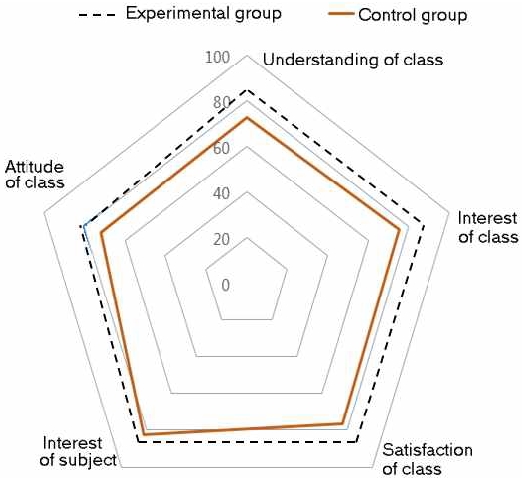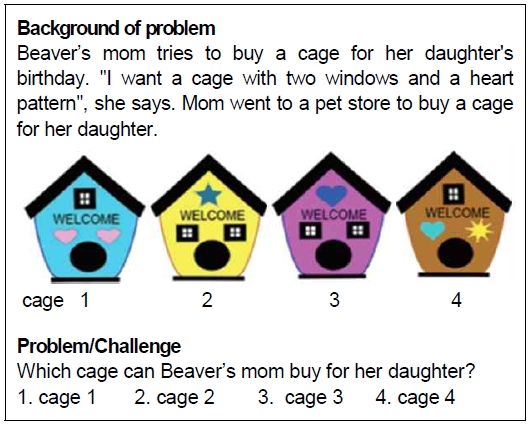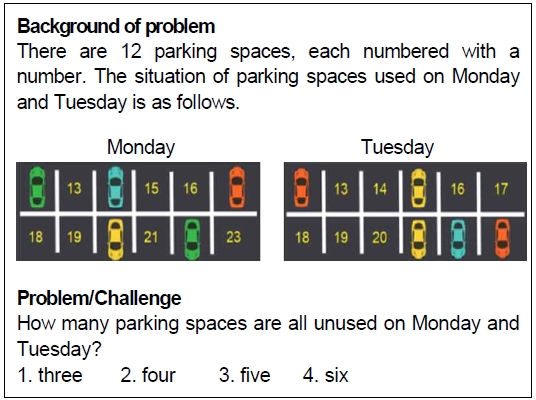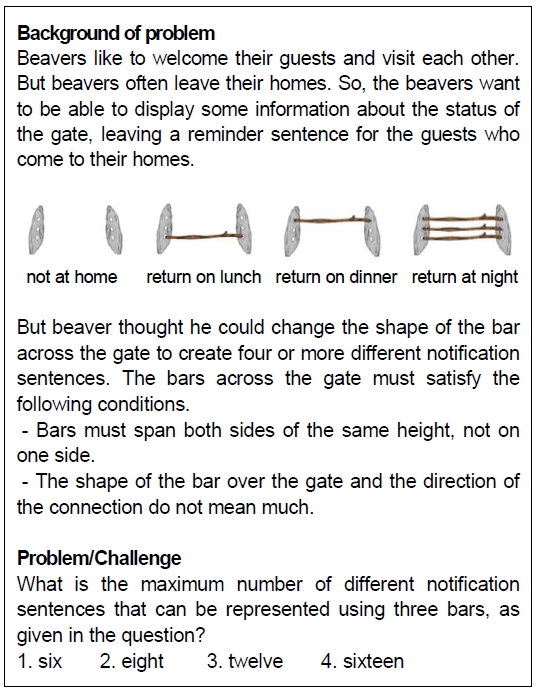
A Study on the Effect of Bebras Challenge to Raise CT
Copyright ⓒ 2019 The Digital Contents Society
This is an Open Access article distributed under the terms of the Creative Commons Attribution Non-CommercialLicense(http://creativecommons.org/licenses/by-nc/3.0/) which permits unrestricted non-commercial use, distribution, and reproduction in any medium, provided the original work is properly cited.

Abstract
This study is on the effect of the learning method for the learners to efficiently develop their computing power through the goal of middle school’s information subject, which has been implemented based on the 2015 revised curriculum since March 2018. To do this, we looked at the Bebras challenge to see if it would help learners develop their computational thinking(CT) skills and solve problems. First, we analyze the previous questions of Bebras challenge, examine whether these problems are suitable for the current curriculum, and how Bebras challenge as a learning tool influenced the increase of students' CT ability, curiosity and satisfaction. Using Bebras challenge's open questions and hands-on experiences, we analyze the relevance and suitability with information subject and whether it is suitable to raise the CT. When used as a learning tool, it was found to have a significant effect on students' CT, curiosity and satisfaction.
초록
본 연구는 2018년 3월부터 2015 개정 교육과정에 기초하여 시행되고 있는 중학교 정보 교육의 목표를 통해 학습자들이 효율적으로 컴퓨팅 사고력을 갖추기 위한 학습법에 대해 연구하였다. 이를 위해, 비버챌린지를 통해 학습자들이 컴퓨팅 사고력을 갖추고 문제를 해결할 수 있는 능력을 키우는 것에 효과가 있는지 살펴보았다. 먼저 비버챌린지의 기출문제들을 분석하고, 이 문제들이 현재의 교육과정에 적합한지를 살펴보고, 비버챌린지를 학습 도구로 사용했을 때, 학생들의 컴퓨팅 사고력의 증대와 호기심, 만족도에 어떤 영향을 가져왔는지 연구하였다. 비버챌린지의 공개된 기출문제들과 체험하기 문항들을 통해 정보 교과와의 연관성, 적합성, 컴퓨팅 사고력을 키우기에 적합한 과제인지 분석해 보고, 이것을 학습 도구로 사용했을 때, 학생들의 컴퓨팅 사고력과 호기심, 만족도에 유의미한 결과를 가져온다는 것을 확인하였다.
Keywords:
Bebras challenge, Information subject, Computational thinking, Learning tool, Education curriculum키워드:
비버챌린지, 정보교과, 컴퓨팅 사고, 학습 도구, 교육과정Ⅰ. Introduction
The world we live in is an information society with high speed, and the industrial structure is changing rapidly. As a result, new job groups are being created as complementary and alternative jobs due to computerization, and are transforming into an era in which software capabilities are needed. So, talent growth with software capabilities is becoming a concern today and the need for education on the underlying software is also required worldwide. According to [1]. Korea's software industry competitiveness ranks only 14th among 19 major OECD countries, and its efficiency is only one third of software industry of advanced countries. The factor is the lack of software expertise. Many countries, as well as Korea, are aware of the need for information education and are preparing courses to foster future talents. In July 2015, the ministry of education and the ministry of science, ICT and future planning(MSIFP) announced “Training talent development plan for software-centric societies” to foster the talents by strengthening software education and required software education in school education through September 2015 revised curriculum.
From March 2018, the ministry of education and educational institutions have begun preparations for full-scale implementation of software education in middle school[2]. To support this, MSIFP selected 'Leading school for software education' from 2015 and has been operating it up to date to apply software education in schools, collected various requirements and reflected them in the policy. This study focuses on computer education, and gets how to improve computational thinking(CT) through the goal of computer education from the current state of middle school information education that has been implemented based on 2015 revised curriculum since March 2018.
In particular, by using Bebras challenge among the current educational models, and by the basic direction for learners to develop the ability to solve problems and to prepare the CT ability that are essential to living in a future society, this study will consider whether it is suitable for analyzing and solving various problems. Particularly, it will look at the followings. First, Bebras challenge, which consists of tasks that understand the basic concepts of informatics and develop CT. Second, the suitability and relevance of the information subject and analyzing whether it is a suitable task for developing CT through the open questions of Bebras challenge. Third, a closer look at how it affects students' CT, curiosity, and satisfaction when it is used as a learning tool. Fourth, ways to increase students' CT and their interest in the information subject by examining the effectiveness of the Bebras challenge teaching method.
Ⅱ. Theoretical Backgrounds
2-1 CT
With the popularity and usefulness of computers, people have been using computers to do things they have been doing before. This is called computing. The term also refers to mathematical calculations in terms of computer science, and broadly defines computing[3]-[4] as any activity that develops and uses computer technology resources. The term “CT”[5] derived from this is a means of moving away from fragmentary learning to complex thinking and of being the main ability to solve problems creatively. It applies the problem solving ability of computer to human thinking system and uses it to solve problem in various fields - data collection, analysis, expression, problem decomposition and abstraction, automation, etc.
Wikipedia defines CT as follows[6]. It is the whole process of thinking that involves defining a problem and describing the answer so that the computer can perform effectively. Problems that can be different than just one require a comprehensive and meaningful solution based on various variables and there needs decomposition, data representation, generalization, modeling and algorithm through CT. Dr. Jeannette Wing in his article at ACM, states that "CT skills are not just limited to computer scientists, but have become fundamental skills for everyone to read, write and count"[7]. He also mentioned the importance of integrating CT with other disciplines. Amit Deutsch (Instructional designer in Google) writes: “'How can we determine the sequence of human beings?', 'Is the British playwright Shakespeare written all the works in his name?', 'Can you write a computer program that writes and composes music?', these questions that arise in our lives are those that require CT, and CT is the method that more and more people are using to solve problems”[8]. In other words, CT is one of the approaches to solving problems, decomposes the problems using calculation and figures out how to solve them. CT consists of four main processes(table 1).
In CSTA[9], CT process is defined as nine steps, “data collection → data analysis → data presentation → problem decomposition → abstraction → algorithms and procedures → automation → simulation → parallelization”. People want to learn how to apply CT in many areas of problem. When a computer encounters a complex problem, it is thinking about computing when trying to find new principles by analyzing vast amounts of data. So CT is one of the ways we conquer problems. In other words, it is a process for problem solving and an abstract way of thinking. Raquel Romano (Software engineer in Google) said, “To solve a problem through CT, we can break it down into pieces of different sizes, find a way to solve each problem, and then gather each solution to solve the problem. This allows anyone to solve any problems”[8]. Therefore, CT is practical enough to be applied to problems in real life beyond the thinking used only for computer programming and beyond management, finance, engineering, and art[6]. Now, many countries around the world are adopting software education as a formal curriculum, and are working on CT beyond just coding. In a rapidly changing and complex future society, CT is one of the abilities everyone needs. Developing your CT skills will help you to develop creativity, problem solving skills, thinking skills etc., so that you can effectively solve various problems in your daily life.
2-2 Software education
Software education isn't just about coding programs. Software training also includes program coding and covers all aspects of information, including information security and information ethics. The purpose of software education is to understand the basic concepts and principles of computers based on healthy information ethics and learn CT and logic based on them. It also adds creative problem solving skills to solve various problems. In short, the purpose of software education is to cultivate creative and converged human resources with CT skills. To do this, they needed tools to increase their CT. Bebras challenge is one of the most efficient and evaluation tools for developing CT.
Bebras challenge[10] consists of tasks that can be challenged without special prior knowledge. Through these tasks, it is a problem solving-based evaluation model and educational innovation developed for the purpose of inducing learning motivation for information education and fostering CT. Regardless of area, school, teacher, student level, gender, etc., anyone can challenge. All of the tasks of Bebras challenge include the concepts of information science and elements of CT. Thus, Bebras challenge can be used to foster ICT literacy and CT based on competition and cooperation[11]-[12]. Bebras challenge was launched in Lithuania in 2004 with 779 persons and has spread throughout Europe. In particular, Bebras challenge has been recognized and utilized for its educational applicability, including being won the best achievement award in education by the 2015 European information science society. In addition, Bebras challenge became a global festival of information education involving more than 2 million people in 63 countries as of 2017. Korea became an official member country since 2017, after the pilot participated in 2016 under the leadership of the Korean information science society.
The actual problem solving process does not ask for information science knowledge itself, but evaluates the ability to abstract or automatable problems based on CT. In particular, tasks that model the things that can be experienced in the real world are presented, and based on ICT knowledge to solve the tasks on an online basis. Through this series of courses, students participating in the Bebras challenge can develop their CT skills and thereby develop their ability to solve problems creatively. However, when students were exposed to coding education in the absence of prior knowledge of informatics, the rate of understanding and accepting hardly the concept of informatics was high, and the students who thought so had less interest in information subject.
Before injecting informative concepts and learning a series of courses, students can learn to make informative concepts much easier by letting them think about CT through Bebras challenge. In addition, based on CT ability, it can enhance interest and curiosity about information science by presenting problem solving ability through expansion of thinking. Table 2 shows an example of the challenge.
Ⅲ. Research Methods and Procedure
3-1 Research issues and limitations
This study examines the effectiveness of using Bebras challenge among the various methods used as software education to develop CT ability. For this study, consider the followings : The limitations of this study are as follows.
First, what is the tendency of the problem of Bebras challenge and the problem of past?
Second, what is the perspective of these tools for teachers who have actually used Bebras challenge to guide their students?
Third, is it effective to measure students' CT ability through the teaching method using Bebras challenge?
Different tools exist for software training to develop CT. Therefore, this study puts the following limitations.
First, this study only considers the benefits of software education for CT based on Bebras challenge.
Second, the challenge is held around November every year, and is studied through interviews with teachers who have directed Bebras challenges and their teaching tips. Participation in this challenge is helped by the existing teachers, as they can formally participate after the guidance of the school's information teacher and the school account or card payment.
Third, anyone can experience the open issue of Bebras challenge, and the past questions that can be accessed through the publishers are the ones in 2017, so the experience questions and the past questions cannot be reflected in the analysis data.
3-2 Areas for Bebras challenge’s evaluation
This study analyzes Bebras challenge’s experience questions that were opened for easy access and experience, and the 2017 previous challenge questions published in books. The interview is also conducted with the teachers of the current high school information subject who are in charge of the software lead school. Also, this study is conducted using the questions of Bebras challenge in the subject of A middle school to develop CT ability, and the students' satisfaction and achievement rate of the contents related to the ability are examined.
The Korean Bebras challenge, in which students participate in voluntary participation, allows only participation in school units and is conducted under the guidance of an information teacher at each school. In particular, 6,006 students from 146 schools nationwide attended the Korea Bebras challenge 2017. The students had to resolve the 15∼25 questions presented within 3 minutes per task, which were selected from question banks co-developed by official member states. Bebras challenge site has an always-on experience corner that opens up opportunities for students to preview Bebras challenge issues and stimulate CT. Table 3 shows the evaluation areas according to the curriculum standard framework published by CSTA for the questions of Bebras challenge.
3-3 Instruction model of Bebras challenge
Software teaching method using Bebras challenge is a problem-centered learning method based on constructivism philosophy and table 4 is a teaching and learning plan for the digital representation of materials in middle school information subject using Bebras challenge. Before explaining the concept of binary numbers in ‘introduction’, the problem of the parking space in table 5 is presented. The problem in table 5 is one of the low class of difficulty level that can be easily solved even by elementary school students[13]-[14], and it is DSR when analyzed in the evaluation area. Students receiving a given task tried to determine the number of empty parking spaces in common. Although they did not explain computer terms or concepts, they found that they had 4 unused spaces in two days as operations in their brains to extract common elements and obtain results. This question relates to the binary representation of computers. We explained that the parking status can be changed the expression to '1' where it is parked and to '0' where it is not.
101001 100100
001010 001111
<Monday> <Tuesday>
The binary gate problem in table 6 is also one of the low class of difficulty level that can be easily solved even by elementary school students. With the given problem, the students could see how they counted the numbers by increasing the number of bars used by the three bars. In this case, we explained how the bar can be expressed as '0' and '1', which the computer understands and made with my students to see what combinations they could make. As there are three bars,
000 001 010 100 011 110 101 111
All eight can be represented as 23. Just as the appointment is based on the number of bars, the computer could explain that all information is stored as a combination of ‘0’ and ‘1’ numbers.
Ⅳ. Experiment and Evaluation
4-1 Class satisfaction using Bebras challenge
Information textbook used in A middle school explains the concept of data and digital and the concept of binary number through the way of expressing it using the jeongjuseok(stone) and jeongnang(bar) of Jeju island. Similar problems related to the unit are Bebras challenge items in table 5 and 6, so we used directly in the class and the students' understanding and satisfaction of the class were examined. A middle school consists of eight classes in the first grade. Four of the classes were conducted by the information subject teachers based on the textbook explanations, while the other four classes were conducted by the researcher. These students have been taught by the same information subject teacher for more than 2 months, and the classes were divided into four classes for teacher and students' mutual feedback(table 7).
The focus of the study was to examine the interest, concentration, and understanding of the contents of the class through the binary description of the introduction. The survey was conducted on students' satisfaction, attitudes, and interests in information subject. The results are shown in table 8. The control group briefly referred to the system's understanding of the binary number as '0' and '1' and made a combination. Among the students who showed concentration at the beginning of the class, it tended to increase the number of students who were distracted by suggesting that 'it is like a math class'. And among those who responded so, there was a lack of concentration in class. When the understanding about the subject fell down, it was observed that the class concentration and the subject interest decreased slightly(table 8, fig. 1).
In the case of the experimental group, the understanding and interest could not be lost by inferring through the picture and changing its expression rather than presenting the concept of information first. The pictures used in Bebras challenge stimulated the students' perspectives and gave them time to think about their tasks and solved the problems themselves and together. Later, when '0' and '1' used in the computer were expressed, it was less talked about 'it's like a math class' than the students in the control group.
Monday : 1 0 1 0 0 1 0 0 1 0 1 0
Tuesday : 1 0 0 1 0 0 0 0 1 1 1 1
Result : 1 0 1 1 0 1 0 0 1 1 1 1
The students inferred that if 1 was even one of two, it would be 1, else it would be 0, so it would be easy to see where it was used even once. Using the same number again, let's show different results.
Monday : 1 0 1 0 0 1 0 0 1 0 1 0
Tuesday : 1 0 0 1 0 0 0 0 1 1 1 1
Result : 1 0 0 0 0 0 0 0 0 0 1 0
Let's guess what the question was asked to get the above result. It was inferred that Monday and Tuesday two days could be replaced with a question to find a parked space. In the following cases,
Monday : 1 0 1 0 0 1 0 0 1 0 1 0
Tuesday : 1 0 0 1 0 0 0 0 1 1 1 1
Result : 0 0 1 1 0 1 0 0 1 1 0 1
On Monday and Tuesday, they could turn to the question of finding a parking space that was used for only one day. The process of inferring with students is a bit out of the textbook section, but they discover and infer these principles themselves, without having to learn the logic operations of computers. It's a simple matter, but it has proved that they can use CT skills through Bebras challenge problems. Experimental with simple content is insufficient to generalize student achievement and satisfaction. However, although it was a small number of times, we concluded that students could develop CT through other types of tools, increase their interest in subjects, and Bebras challenge as a tool for teaching or evaluation is no inferiority.
4-2 Educational effects of Bebras challenge
The interview with the teacher who led Bebras challenge was an opinion that it was suitable and efficient to integrate with the curriculum. In terms of content, Bebras challenge consists of the basic concepts of information subject and elements of CT. So it is very similar to the content system of the information subject and there were some teachers' opinions that some of the content exceeded the 2015 curriculum. Since some problems were selected from the question banks where Bebras challenge established, it was possible to extract only the elements included in the Korean school curriculum, so the teachers said that there is no abnormality as a tool to use in class. Education related to the information subject tended to be biased mostly in algorithms and programming, but the teachers suggested that Bebras challenge could be a good evaluation tool because it ranges from information social ethics of computer subject to programming, algorithm, and physical computing. Finally, they said that the students who learned through Bebras challenge were able to infer another problem by using what they learned, which helped them to think. In summary, the educational effects of Bebras challenge are as follows.
First, it is suitable for the nature, goals, contents and organization of the 2015 revision information curriculum.
Second, anyone can challenge, regardless of region, school, level of prior knowledge, or gender.
Third, it induces learning motivation for information science and helps to understand how to form and apply basic concepts.
Fourth, it helps to measure and promote CT.
Fifth, it can be used as an automatic scoring program capable of self-directed learning and evaluation.
Sixth, various teaching-learning models such as problem based learning, backward design, design-based learning, backward learning, and class contact-typed evaluation based on constructivism philosophy can be designed.
Ⅴ. Conclusion
This study confirmed that students can increase the interest and concentration of class through the class using Bebras challenge. Also, for this study, there were many parts that were suitable for the current curriculum by analyzing the actual Bebras challenge items and solving them through the problem solving process. If someone takes advantage of this or conduct in-depth research, information subject can be an interesting subject for students, and students' thinking can be more than just a subject to help them develop CT skills that allow them to converge and think deeply. In solving Bebras challenge task, not only the students but also the instructors were able to obtain the informatics concept in solving the problem through the presented tasks without explaining the informative concept. And, before explaining the concept, it gave the teachers a broader view.
This study concluded that by using Bebras challenge efficiently, students can not only learn the concept of information, but also analyze, decompose, and infer and abstract the problem based on the patterns of the individual. And it was concluded that a tool that would help students with such CT will help foster creative and convergent talent based on the purpose of software education. In addition, the fact that this tool is not pointless suggests that Bebras challenge is worth using as a tool for teaching and evaluation given the 2019 information olympiad question type.
References
- Fourth Industrial Revolution, IT Terms Dictionary, https://terms.naver.com/entry.nhn?docId=3548884&cid=42346&categoryId=42346
- Ministry of Future and Ministry of Education, “Basic Plan for Software Education Activation”, 2016. 12.
- Ministry of Education, “Practical Arts (Technology, Home) /Information Curriculum”, Notice No. 2015-74. 2015.
- Wikipedia, “Computing”, https://ko.wikipedia.org/wiki/
- Naver Knowledge Encyclopedia, “Computational Thinking”, https://terms.naver.com/entry.nhn?docId=2060099&cid=43667&categoryId=43667
- Wikipedia, “Computational Thinking”, https://ko.wikipedia.org/wiki/%EC%BB%B4%EDA8%ED%8C%85%EC%82%AC%EA%B3%A0
-
Wing, Jeanette M., “Computational Thinking”, Communications of ACM, Vol. 49, No. 3, pp. 33-35, 2006.
[https://doi.org/10.1145/1118178.1118215]

- Youtube, “What’s Computational Thinking?”, https://www.youtube.com/channel/UC50doOVUOc5_ApMeNX96ULg.
- CSTA, “Computational Thinking Teacher Resource Second Edition”, Computer Science Teachers Association and the International Society for Technology in Education (ISTE), 2011.
- Bebras Challenge, https://www.bebras.org/
- Jung Woong Youl and Lee Young Joon, “The Applicability and Related Issues of Bebras Challenge in Informatics Education”, Journal of Korea Computer Education, Vol. 20, No. 5, pp. 1-14, 2017.
-
Jiyae Noh, “Computational Thinking Assessment in SW Education Using Robot: Focused on Test, Bebras Challenge and Self-Report Questionnaire”, Research of Education Engineering, Vol. 34, No. 3, pp. 849-876, 2018.
[https://doi.org/10.17232/KSET.34.3.876]

-
Soojin Jun, Yongju Jeon, Seulgi Kim, Doyong Kim and Inkee Jeong, “Elementary School Students' Level of Computational Thinking through Bebras Challenge 2017”, Journal of Korea Information Education, Vol. 22, No. 3, pp. 345-356, 2018.
[https://doi.org/10.14352/jkaie.2018.22.3.345]

-
Jun Yong Joo and etc., “An Exploratory Study on Teaching & Learning and Evaluation Methods using Beaver Challenge in Software Education”, Journal of Korea Computer Education, Vol. 21, No. 6, pp. 63-82, 2018.
[https://doi.org/10.32431/kace.2018.21.6.006]


2002년 : 경상대학교 컴퓨터과학과 졸업
2019년 : 경상대학교 교육대학원 컴퓨터교육 전공 교육학석사
2006년~현재 : 경남과학고 재직
관심분야 : 머신 러닝, 컴퓨팅 사고, 영상 처리

2000년 : 한국방송통신대학 경영학과 학사
2011년 : 경상대학교 경영학과 박사
1988년~현재 : 경상대학교 사회과학대학 재직
관심분야 : 플립 러닝, PBL, HR, HRD
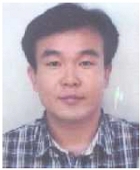
1987년 : 경상대학교 전산과 학사
1997년 : 숭실대학교 전산과 박사
1989년~1992년 : 삼보컴퓨터
1997년~현재 : 경상대학교 컴퓨터과학과 교수
2014년~현재 : 경상대학교 대학원 문화융복합학과 교수
2011년~현재 : 경상대학교 공학연구원 멤버
2018년-현재 : 경상대학교 교육정보전산원 원장
관심분야 : 의료 영상 처리, 머신 러닝, SLAM, 영상 인식, 컴퓨터 네트워크, 컴퓨팅 사고

